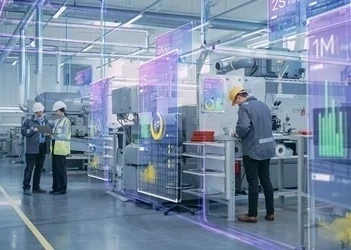9 process mining obstacles and how to overcome them
Many process mining projects fail due to a variety of reasons
Add bookmark
Process mining can be invaluable to modern businesses, from streamlining processes and reducing errors to spearheading visualization and automation. Benefits include enhanced bottleneck analysis, real-time performance measurement and compliance monitoring. No surprise then that 63% of global companies have started using process mining and most global businesses plan to at least pilot process mining in the near future, according to research by Deloitte.
“Process mining has been a game changer in helping organizations overcome two of the most common causes of operational inefficiency: the lack of attention to the current state or as-is process, and a lack of means for organizations to deeply understand their processes,” Tom Finn, founder of LEED Strategy, tells PEX Network.
However, despite its potential, many process mining projects fail due to a variety of reasons. Here are nine obstacles that can hamper process mining efforts, as well as advice on how to overcome them.
READ: PEX Guide: What is process mining?
Process maturity
A lack of process maturity is a significant inhibitor of effective process mining, and a key consideration before starting any process mining deployment is an honest assessment of where your organization is when it comes to process maturity. There are four stages of process maturity, and the further along these stages your organization is, the readier you are for the full execution management approach of process mining, according to Process Mining for Dummies by Celonis.
The four stages are:
- Developing process understanding
- Standardizing processes
- Optimizing processes
- Innovating process execution
Strategic alignment
Establishing the right place for process mining to fit into an organization can be a key challenge, as can ensuring that insights are implemented to achieve its objectives – i.e. improve processes. Process mining must be carefully aligned with and integrated into the business. When process mining is viewed as the next “must have item” and is not linked to the overall organizational goals and objectives, then process mining is being set up for failure as there is no meaning attached to its existence within the organization, Finn says. “Have clear strategic objectives set up across the organization and ensure process mining has a place for bringing the organization closer to achieving its objectives.”
Who will build up this expertise in the organization? It can be a central process excellence team, a process analyst in a particular department, or an auditor. Whoever it may be, process mining needs to be integrated into their way of working, writes process mining thought leader Anne Rozinat.
Data quality
Successful process mining output relies on quality data, but most enterprise data can be incomplete, inaccurate or have confusing timelines. Therefore, process mining tools may analyze faulty data and provide inaccurate results. Similarly, with process mining, so much data is gathered that it becomes more difficult for humans to understand and interpret.
“It is important for data analysts, domain experts, data stewards and others involved in data quality initiatives to clean and prepare the data before implementing process mining,” writes Hazal Şimşek, AIMultiple industry analyst.
It is recommended that businesses have data quality assurance strategies and data quality tools to constantly improve data quality, Şimşek adds. This can help businesses to:
- Automate the process of data entry.
- Identify and eliminate duplicate records.
- Deploy random forest algorithm to classify data.
“An explosion of capability from generative AI tools, both standalone and embedded within platforms such as Microsoft 365, is only just starting to emerge,” Dan Coleby, director of client technology value at Advania, tells PEX Network. “What we feel can become prevalent within 2024 is the use of generative AI to analyze and propose improvements to processes that have been mined and documented through process mining.”
Support and buy-in
Buy-in for process mining is highly important to ensure it gets the ongoing support it needs, but it can be tricky to secure without the right approach. “If support from top-level management is missing, then the initiative is destined for failure,” Finn warns.
Present a compelling business case that shows the many advantages that can be gained for the organization through the introduction of process mining and develop a clear and manageable strategy with the executive level and execution level of the organization to ensure buy-in across all levels, Finn says.
People and culture
Process mining can feel threatening for people who do not trust that the results will not be used against them or do not fully understand the analyses being performed. Process mining requires high levels of transparency and can reveal unpleasant results that trigger defensive mechanisms in people, according to a Delphi Study research paper on the opportunities and challenges for process mining in organizations. “Process mining is perceived as intrusive and raises concerns about privacy and individual performance controlling.”
Develop a strong culture of respect for people within the organization, and when dealing with the process, ensure you include all those directly linked to it and be mindful that your language is always inclusive and respectful, Finn says. “Ensure all concerns have been adequately addressed and demonstrate how process mining fosters continuous improvement and is not designed to inflict hardship upon the employees.”
Root cause analysis
Process mining tools identify and portray process-related issues, but they may not provide granular answers on the root causes of issues, Şimşek says. This problem can be tackled by leveraging machine learning algorithms in process mining, she adds. “Combined with machine learning algorithms, diagnostic process mining identifies the root causes of the problems.” There are two common approaches here:
- Some process mining vendors offer software providing detailed process data for business intelligence tools and data mining/machine learning platforms or separate discovery tools identifying root causes.
- Some other vendors integrate root cause analysis tools into the software to automatically run the analysis.
Vendor selection
Process mining is a fast-developing software category and there are an increasing number of vendors operating in the space. Narrowing the choice to the right partner can be difficult, but you need to know that their technology is headed in the same direction as yours. “Start by asking prospective vendors a lot of questions. You want a full understanding of their proposed technology and its capabilities, because you need a proven methodology to gain the best value,” reads Process Mining for Dummies.
You want to learn more about each vendor’s track record, including how well its delivery approach works and its ability to handle technological complexity, it adds. “Get a good look at the ecosystem to gauge the vendor’s success. You’ll benefit from a mature ecosystem that has partners who can align closely with your requirements.”
Complex interconnected processes
Traditional process mining tools can fail to provide clarity in analyzing complex processes because they lack the sophistication to evaluate processes with a large number of variables, Şimşek says. In addition to the number of tasks or variables added, in some cases, processes are heterogeneous and cross-sectional. “For example, in healthcare processes, it becomes difficult to generalize and model processes that include heterogeneity and multi-disciplinary collaboration,” she adds.
New process mining tools that integrate AI and machine learning algorithms aim to overcome these complexity issues. For instance, leveraging AI and computer vision to capture and discover all process data, vendors can generate process mining output in a matter of days. “A similar process mining effort using traditional process mining software could take months,” Şimşek says.
Skills and resources
Process mining requires a combination of technical, analytical and domain expertise. A lack of these necessary skills can lead to project failure. “Process mining is only as effective as the people that drive it. Without the relevant training and upskilling, organizations are leaving themselves wide open to poor interpretation of results and an extremely frustrated workforce,” Finn says.
A lack of comprehensive domain and business expertise inhibits the ability to customize process mining and interpret results, a lack of fundamental analytical skills impedes the ability to derive value from process mining and a lack of sufficient training in the technical aspects of implementing process mining is detrimental to its setup and general application, the Delphi Study findings suggest.
“Allow scope in your budget to adequately train and upskill individuals,” Finn says. “If there is no scope for upskilling, then organizations should consider the possibility of outsourcing to individuals who are skilled in process mining.”
Register now for All Access: Process Mining, taking place March 5-6, 2024.
































